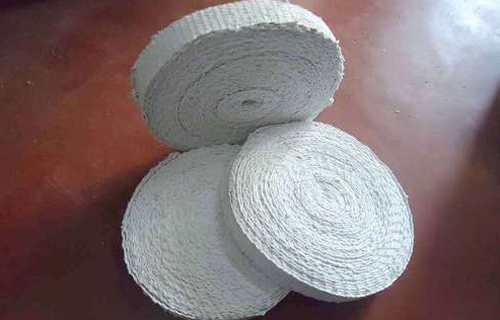Does Your Tape Have Asbestos in It?

Asbestos is a toxic mineral that used to be heavily mined in the United States before it was regulated in the 1970s. Since then, products are considered safe to use even if they have asbestos in them as long as the percentage of the substance does not surpass 1%.
Another thing to keep in mind when considering the dangers of the mineral is that it only becomes a threat to humans when it is released in the environment in the form of fibers. In such a scenario, the substance is easy to inhale and once it is inside the organism, there is no natural defense that the body has against it, and therefore, it will remain in it causing constant irritation. After a few decades of the body being in this state, there is an increased risk that cancerous tumors will develop.
Asbestos Fibers and Added Adhesive
Asbestos was a highly demanded material due to the fact that it improved the strength of the mixtures it was poured in and it also significantly lowered their risk to catch on fire since it showed natural fire-retardant properties. Such qualities inspired manufacturers to add asbestos to cement, vinyl, wood fiber and many other materials used in construction as a way to make them more secure. In the first half of the 20th century, asbestos was mined across North America which meant that it was accessible at a reasonable price, and so companies from all fields were exploiting the mineral and pushing it on the market in various forms.
One such product that had a wide-spread use, whether industrial or commercial, among Americans was asbestos tape. The product was generally to be recognized by its appearance since it was known to typically be white of color and similar to thick paper. The way that it worked was that asbestos fibers were covered on one side with a sticky adhesive without many other chemicals added to this compound. As a consequence, asbestos tape is considered one of the most dangerous asbestos products since it is virtually made of toxic fibers in its entirety. The most common situations that required the use of the tape prior to the 1970s were those related to the electrical and heating systems. Over time, when the tape would inevitably deteriorate, as a functioning structure would disturb it constantly, the tape would crumble and release asbestos dust.
Enclosing or Removing Asbestos Tape?
If you are certain that you have asbestos tape in your house, you might have the option of enclosing it. This approach would only be possible in the case in which the tape is in a good condition, meaning that it is intact with no sections that are falling apart and spreading fibers in the home environment. By engaging in this action, one keeps the toxic tape in place while ensuring that they phase out the chance of friability. The most common method to accomplish this is to seal it in place by spray-painting the surface in question.
If, on the contrary, you can clearly see that the asbestos tape in your house is beyond repair, you should be very cautious in the way you address the issue. It would be ideal for you to research qualified abatement contractors and to let them handle the case to make sure that no harm will be done to you and your family as a result of an unprofessional approach of a hazardous substance that could lead to health concerns.
If you decide not to bring in any professional help for either an encapsulation job or for removal, you should make the necessary preparations for dealing with a highly toxic item. Therefore, you should especially be purchasing breathing protection, such as a respirator approved for asbestos, also coveralls that you can dispose of immediately after the work for the day is finished.
You should also adjust your behavior on the worksite by being aware of the fact that you are operating in a toxic environment. Thus, you should be careful to:
- not eat, drink and smoke on the worksite - to avoid inhaling or ingesting asbestos dust.
- clean your hands and face with water and soap - when on a meal break or at the end of the workday.
- not scrub, drill or cut - to prevent creating asbestos dust.
